Phlegm-Fluids in the Lungs
The information provided here is not a replacement for a doctor. You shouldn't use it for the purpose of self-diagnosing or self-medicating but rather so you can have a more informed discussion with a professional TCM practitioner.
At a glance
Preliminary reading: What is a pattern? The concept of Phlegm
Key attributes
Chinese name: 痰饮阻肺 Pinyin name: Tán Yǐn Zǔ Fèi
Pattern nature: Full
Pattern hierarchy: Specific pattern under Phlegm
Causes
Common causes: 1. Diet, 2. Excessive physical work
Diagnosis
Common symptoms: Coughing Dizziness Itchy throat Feeling of cold Shortness of breath and five other symptoms
Pulse type(s): Slippery (Hua), Soggy (Ru), Wiry (Xian), Fine (Xi)
Tongue description: Pale tongue with thick sticky white coating
Treatment
Treatment principle: Resolve Phlegm, tonify Spleen, Lung and Kidney Yang.
Common formulas: Ling Gan Wu Wei Jiang Xin Tang Zhi Sou San
Pathology
This pattern is similar to Damp-Phlegm in the Lungs. Both has the typical symptoms of Phlegm such as coughing, breathlessness, chest oppression, sputum, feeling of heaviness of the head and dizziness. Coughing and breathlessness happen because the Lung Qi can not descend accordingly. Chest oppression, sputum and head heaviness are due to Phlegm obstructing the chest, the throat and the head orifices.
As for the other aspects of the two pattern, Dampness is a type of Body Fluids that is like a mist. It can be causes by external Damp invasion for acute cases, while the chronic cases are mainly due to Spleen Qi or Kidney Yang Deficiency and the Dampness becomes internal.
Fluids (饮 Yin) is a type of Body Fluids that is very watery, dilute and frothy. It is lighter than Phlegm and but heavier than water. It usually happens only in chronic cases among the elderly. It is a result of long term Spleen, Lungs and Kidney Yang Deficiency. Therefore there are the symptoms of cold feeling and pale tongue.
Causes
Diet: Phlegm is the result of overconsumption of greasy and dairy foods.
Excessive physical work : Excessive physical work harms the Spleen, Kidney and Lung Yang, which then causes Phlegm.
Diagnosing Phlegm-Fluids in the Lungs
Diagnosing a pattern in Chinese Medicine is no easy feat and should be left to professional practitioners. In particular one has to know how to differentiate between different types of pulses and tongue coatings, shapes and colors as well as learn to read from a long list of seemingly unrelated symptoms.
Pulse type(s): Slippery (Hua), soggy (Ru), wiry (Xian) or fine (Xi)
Tongue description: Pale tongue with thick sticky white coating
Main symptoms: Coughing Dizziness Itchy throat Feeling of cold Shortness of breath Feeling of heaviness White and watery sputum Cought with sticky phlegm Splashing sound in the chest Stifling sensation in the chest
Diagnosis commentary: Key characteristic symptoms of this pattern are the coughing with white, watery, foamy and frothy sputum. It is more likely to occur to the elderly.
Treating Phlegm-Fluids in the Lungs
Treatment principle
Resolve Phlegm, tonify Spleen, Lung and Kidney Yang.
Herbal formulas used to treat Phlegm-Fluids in the Lungs
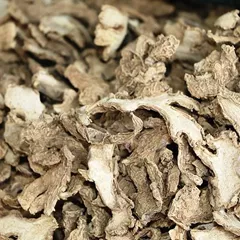
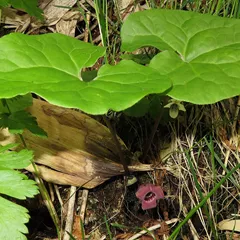

The top herbs in Ling Gan Wu Wei Jiang Xin Tang are Dried Ginger (Gan Jiang), Wild Ginger (Xi Xin) and Poria-Cocos Mushrooms (Fu Ling)
Ling Gan Wu Wei Jiang Xin Tang
Source date: 220 AD
Number of ingredients: 5 herbs
Key actions: Warms the Lungs. Transforms congested Fluids.
Formula summary
Ling Gan Wu Wei Jiang Xin Tang is a 5-ingredient Chinese Medicine formula. Invented in 220 AD, it belongs to the category of formulas that warm and transform Phlegm-Cold.
Besides Phlegm-Fluids in the Lungs, Ling Gan Wu Wei Jiang Xin Tang is also used to treat Cold-Phlegm in the Lungs or Cold-Phlegm.
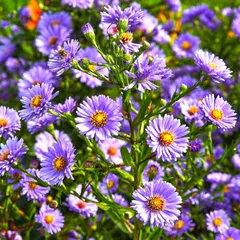
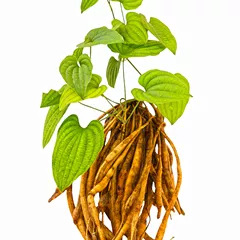
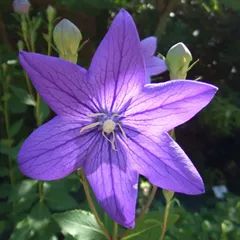
The top herbs in Zhi Sou San are Aster Roots (Zi Wan), Stemona Roots (Bai Bu) and Platycodon Roots (Jie Geng)
Zhi Sou San
Source date: 1732 AD
Number of ingredients: 7 herbs
Key actions: Transforms Phlegm and stops coughing. Disperses the Exterior. Spreads the Lung Qi.
Formula summary
Zhi Sou San is a 7-ingredient Chinese Medicine formula. Invented in 1732 AD, it belongs to the category of formulas that transform Phlegm and extinguish Wind.
Besides Phlegm-Fluids in the Lungs, Zhi Sou San is also used to treat Wind-Cold invading the Lungs.
Diet recommendations
Avoid greasy and dairy foods.
Consequence patterns
Water overflowing to the Heart
Phlegm Fluids is especially obstructive and it can obstruct the Heart Yang and give rise to Water overflowing to the Heart.
Phlegm-Fluids above the diaphragm
Phlegm-Fluids in the Lungs gives rise to rebellious Lung Qi travelling upwards. It spreads the Phlegm-Fluids above the diaphragm.
